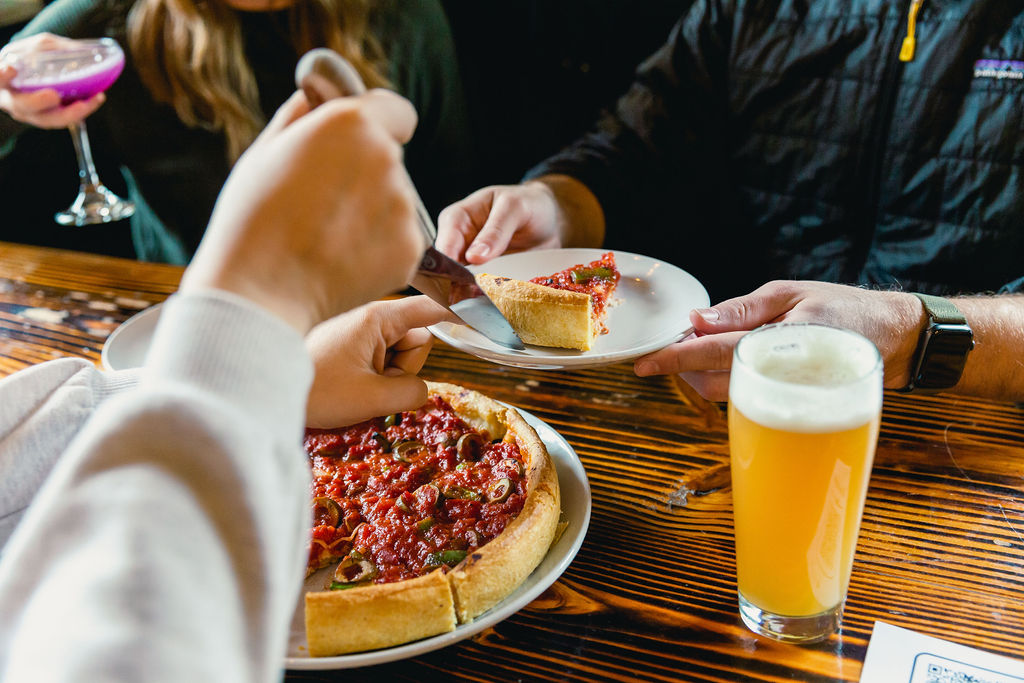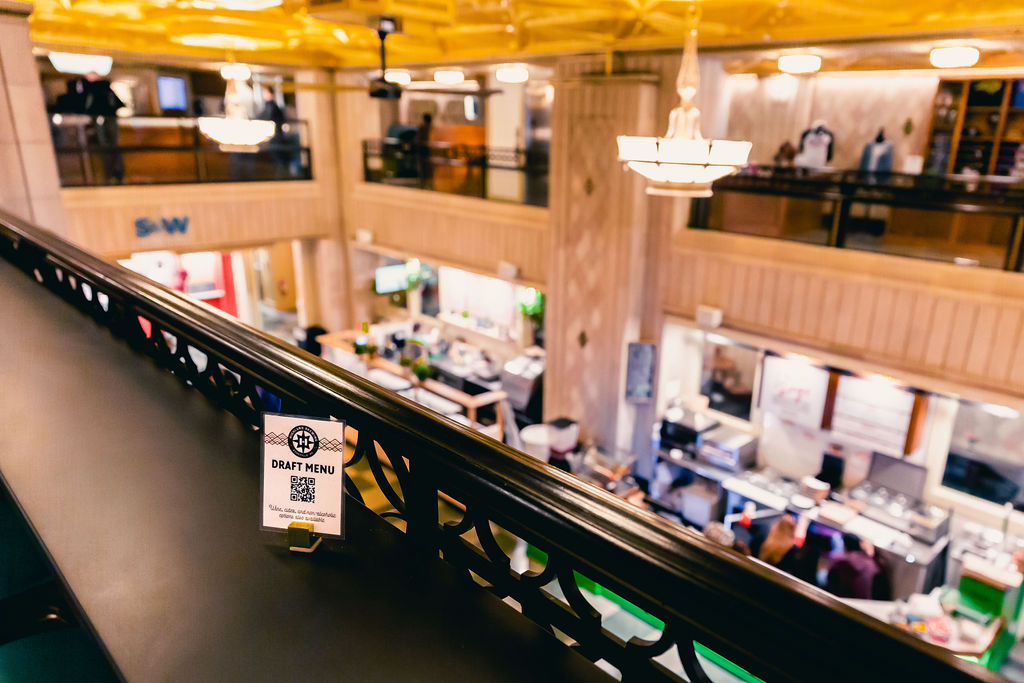13 Restaurant Industry Trends From 2022 Shaping The Year Ahead
2022 restaurant trends shaping the year ahead!

You know what they say: Hindsight is 20/20. And while some of our predictions for 2022 restaurant industry trends rang true, a few of this year’s resulting trends surprised us. (We’re looking at you, climate-change-fighting nachos.)
Without further ado, here are 2022 restaurant trends shaping the year ahead:
You Eat With Your Eyes First: On The Menu in 2022
1. One Nostalgic Dish, Hold The Tears Please
We’ve all been feeling our feelings the past few years. A global pandemic, political unrest, natural disasters, and continued staffing troubles will do that to you.
But the forced isolation and an overdue celebration of diversity in the US also inspired artisans to look inward. The results, in the food and beverage world at least, have been more dishes that reflect a chef’s own history and background.
That means simple meals that take a few delicious ingredients to the next level in a dining experience that makes guests feel like they’re sitting fireside blanketed by their grandmother’s most recent crochet project.
Nostalgia isn’t limited to food, either. You’ll also see it from beverage makers too, like in Montclair Brewery’s Baobiere Golden Ale. Co-owner Leo Sawadogo loves brewing with baobab fruit, native to his country in West Africa, as well as educating guests on the beer culture there.
2. Vegetables Are The Star Of The Plate
The new mains are green! (And yellow and red and orange and purple…)
There are a few factors at play here, pushing protein to the backseat:
- Supply chain: It’s more expensive and timely to secure high quality animal proteins, making veggies the more cost-effective offering.
- Local focus: To avoid price hikes and shipment delays, restaurants are increasingly working with local farms and food suppliers, where vegetables are a-plenty!
- Going green: Not only are vegetables better for your gut, they’re better for the environment, too. Reducing the amount of meat on a menu serves to help fight climate change.
Vegetable-forward dishes mean more seasonality in dishes, too. With chefs more likely to base a main on their latest supply from the farm down the road, guests can expect to see creative takes on seasonal produce.
Chefs are using more vegetables in their meat-forward meals, too. Amy Yi, Culinary Director at Genuine Foods, has seen smaller portions of protein trending: “More large format dishes like lasagna, nachos, stews—but utilizing less meat in an effort to help fight climate change and also to celebrate the rich produce of the various seasons.”
3. Getting Crafty With Non-Alcoholic Beverages
The NA beverage section of menus in 2022 have noticeably more variety! This includes fermented beverages like kombucha as well as more specialty mocktail options. The trend emerges from the same factors we’ve already discussed: Restaurants owners are working with more produce and guests are seeking out healthier options.
Of course, in 2022, these aren’t your standard virgin piña coladas. Restaurants and bars are going beyond fruit juice to mix up fresh, seasonal, and innovative mocktails to suit the tastes of a wide array of clientele.
4. Menu Makeover: Higher Prices & Less Options
If your own restaurant hasn’t done it yet, we bet you’ve thought about it: Menu prices are up. Many business owners feel they had no choice after the cost of ingredients skyrocketed with inflation. And whether it’s $4 more for the same sandwich as last year, or a 20% service charge at the bottom of the bill, guests’ wallets are being used to help restaurants offset increased expenses.
Restaurants are also cutting the amount of menu items they offer in order to afford the higher costs of running their business. Instead of crafting a lengthy double sided menu, restaurants are simplifying their offerings to a few choices done really well. This helps businesses manage their costs better and encourages chefs to minimize waste by using every part of every ingredient on hand—perhaps even in a mocktail garnish!

Find A Seat: Service Looks Different In 2022
5. Service Fees Are Restaurants’ Friends
While the reasons behind service fees vary, a clear restaurant industry trend of the year was charging them. We know that service fees can offset a restaurant’s inflated expenses, but we haven’t yet recognized one of the most expensive line items restaurants face: labor.
The Great Resignation and the labor shortage that followed forced restaurants to meet higher staff expectations as far as paid time off, healthcare, and wages. But because of supply chain issues and all of the other expenses eating at owners’ wallets, some can’t afford to simply offer better benefits.
Service fees are treated as revenue, therefore allowing restaurant owners to decide where the funds go. While some service fees are explained as auto-gratuities, that doesn’t mean they directly line the pockets of service staff. This money may go towards paying for any staff benefits.
6. Counter Service Is For More Than Fast-Casual
What was once considered a service model only for fast-casual establishments has crept into fancier, made-to-order restaurants as well. This is, of course, in part due to a smaller amount of FOH staff needed to perform counter service, but it’s proven to help BOH staff stay efficient as well. With guests ordering everything at once—and from a limited amount of menu items—the kitchen crew can focus on cranking out tickets without worrying about curated timing.
Waiting in line and taking a table number may not sound like the most glamorous experience, but savvy restaurant owners realize any inconvenience is forgotten upon first bite. When your food is just downright good, guests don’t care what they have to do to get it.
7. Dedicated Areas, Instead Of Dedicated Staff, For Pickup
Just because stay-at-home orders are behind us doesn’t mean people don’t still love a cozy night in. Restaurants continue to use ecommerce tools to fulfill to-go orders, but pickup got a little more streamlined in 2022.
Instead of managing curbside pickup and dedicating a team member to run out to car windows with food, many restaurants have implemented pickup stations. Now, there are shelves or lockers where guests can retrieve their own orders.
8. QR Codes Prove Digital Menus Are Superior
We’ve said it once, and we’ll say it again: QR codes are here. to. stay. And their overwhelming restaurant presence in 2022 proves it!
This is another tool that’s helped restaurants continue to serve despite working with a smaller staff: QR code ordering takes admin tasks, like swiping cards and running receipts, off staff’s to-do lists.
But the convenience, and therefore restaurants’ loyalty to them, goes beyond ordering. Accessing digital menus on smartphones means guests can reference the menu at any time—right when they sit down, when they’re ready for another drink, or to peek at desserts as soon as entree plates are taken.
An online menu is also easier for owners to manage. Not only can they edit menu offerings at the drop of a hat, they don’t have to dole out the cash to pay for paper and ink every time an update is made.
Plus, if you’ve ever caught yourself shining a light on a paper menu in a dimly lit restaurant, QR code menus save you that hassle, too.
9. Sharing The Love With Tip Pools
With staff wages at the top of everyone’s mind, it makes sense that this year saw more restaurants working with tip pools. Pooling tips means that a business gathers all tips collected and redistributes them to employees based on their own specific distribution preference. A tip pool typically involves team members that don’t directly interact with guests, like BOH staff!
Besides fostering a collaborative environment and rewarding BOH staff, tip pools make sense for the to-go environment that restaurants are supporting. To-go orders typically bypass FOH staff completely, ending up on KDS screens and heading straight to the designated pickup station. That’s why including those team members that fulfill to-go orders in tips is gaining popularity.

What Else Is New To 2022?
10. Restaurants Are Open Less Days, For Less Time
Your favorite spot’s hours might have changed this year. We’re seeing more and more food and beverage businesses cutting the days or hours they’re open.
Sure, opening for less hours may have begun when staffing shortages peaked. But chefs are also claiming that restaurateurs are choosing to focus on “quality of life” decisions for their teams. Businesses are recognizing the inherent grind of restaurant work needs to be balanced by rest and time off, inspiring a shorter workweek for hospitality staff: four 10-hour days, or three 12-hour days.
Plus, making guests wait for the goods they crave isn’t a bad strategy. Exclusivity in hours and days can drive traffic to a restaurant when they are open. So while it’ll likely be busier, that’s preferred over having a little traffic over all 7 days of the week. Your team can earn some well-deserved tips for the day, and then rest and recover the next!
11. Going Green For Good
Restaurants and their owners serve to uplift their communities, so it’s no surprise that a big 2022 industry initiative was environmentally-driven.
With a significant portion of sales coming from off-premise orders, restaurants found an eco-friendly option for disposable to-go items. Moving forward, you’re likely to see more biodegradable wares like paper straws, wax paper cups, and fiber to-go boxes.
12. There’s Something For Everyone At Food Halls
2022’s trendy hangout spot? Food halls.
Rick Camac, Dean of Restaurant and Hospitality Management at the Institute of Culinary Education, claims one of the major reasons food halls are growing at such a fast rate is real estate: “There’s just massive properties out there that are going for better rates than they’ve ever gone for in many, many years.”
You see, developers had huge commercial projects in the works prior to the pandemic. And now, with people preferring to work from home instead of their cubicles, these buildings need to be filled.
Plus, landlords like the idea of food halls for rent security. If one restaurant goes out of business, which unfortunately isn’t uncommon these days, landlords still have several other renters to depend on for payments despite a new vacancy.
Restaurateurs like ‘em, too! Opening up shop in a food hall is a great way for small businesses to experiment. It’s a chance to see how your menu performs in a certain area, and can inform where you open your own standalone restaurant down the line.
13. The Spookiest Restaurant: Ghost Kitchens
Typically, ghost kitchens are restaurants that operate out of a kitchen with no dining space, and offer delivery only. It’s an enticing model for owners today because no dining area means lower overhead costs and no service staff to pay.
2022’s version of ghost kitchens has evolved to include restaurants with a dedicated area for pickup. This makes ghost kitchens perfect candidates for food halls, too! In fact, the new ghost kitchens encompass a lot of the trends we’ve discussed: a pickup area, ecommerce focus, and counter service.
Maybe this trend isn’t so spooky after all…
Know what else is trendy? Having a POS system that doesn’t stink. Arryved is the industry’s most trusted POS and has the necessary tools to help you take on the new year at full speed. Request a free, custom demo today!
